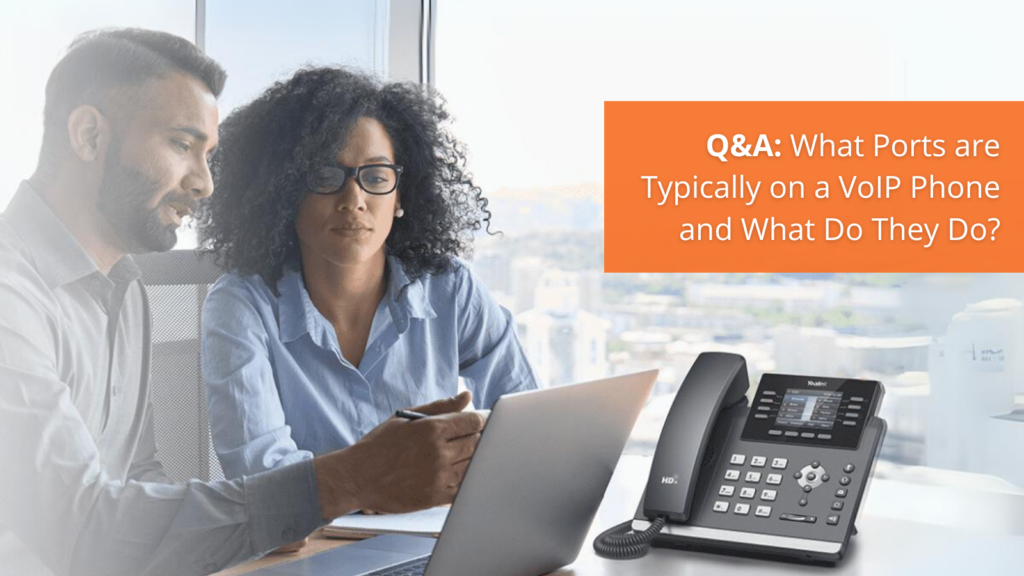Q&A: What Ports are Typically on a VoIP Phone and What Do They Do?

VoIP (Voice over Internet Protocol) phones have become essential in modern workplaces. But have you ever wondered about the different ports on a VoIP phone and what they do? Let’s dive into this topic and explore the typical ports on a VoIP phone and their functionalities.
1. Ethernet Port
Function: The Ethernet port is the lifeline of a VoIP phone. It connects the phone to the network, enabling it to communicate over the internet. Most VoIP phones have two Ethernet ports—one for connecting to the LAN (Local Area Network) and another for connecting a computer, allowing for a single network cable to serve both devices.
Key Points:
- LAN Port: Connects the phone to the internet via a router or switch.
- PC Port: Allows a computer to connect to the network through the phone, often simplifying cable management on desks.
2. Power Port
Function: This port is used to connect the phone to a power source. However, many modern VoIP phones support Power over Ethernet (PoE), which allows the Ethernet cable to deliver both data and power to the phone, eliminating the need for a separate power adapter.
Key Points:
- Traditional Power Adapter: For phones without PoE capability.
- PoE: Simplifies installation by reducing the number of cables required.
3. Handset Port (RJ-9)
Function: The RJ-9 port connects the handset to the phone. This port is crucial for traditional phone functionality, allowing users to pick up and answer calls using the handset.
Key Points:
- Typically located on the side or back of the phone.
- Standard connection for the phone handset.
4. Headset Port (RJ-9 or 3.5mm)
Function: This port allows users to connect a headset, which is particularly useful for call center employees or anyone who spends a lot of time on the phone. Some phones may use the same RJ-9 port for both the handset and headset, while others have a dedicated port.
Key Points:
- RJ-9: Often used for wired headsets.
- 3.5mm Jack: Some phones provide a standard headphone jack for headsets.
5. USB Port
Function: The USB port on a VoIP phone can serve multiple purposes, such as connecting a USB headset, charging a device, or even connecting to Wi-Fi adapters or Bluetooth dongles for wireless functionality.
Key Points:
- Adds versatility to the phone.
- Supports a range of USB peripherals.
6. Expansion Module Port
Function: This port is used to connect expansion modules, also known as sidecars, which provide additional programmable keys for functions like speed dialing, monitoring other extensions, or accessing additional phone features.
Key Points:
- Enhances phone functionality for power users.
- Common in receptionist or executive phones.
7. AUX Port
Function: The auxiliary (AUX) port can be used for various auxiliary devices, such as external paging systems or door-opening systems. It adds another layer of integration for specialized applications.
Key Points:
- Provides additional connectivity options.
- Supports integration with other office systems.
Understanding the different ports on a VoIP phone can help you make better use of your device and optimize your office setup. From Ethernet and power ports to handset and USB connections, each port plays a vital role in ensuring seamless communication. Whether you’re setting up a new VoIP phone or troubleshooting an existing one, knowing what each port does is crucial for efficient operation.If you have any questions or comments, we are here to help! You can leave them below, chat with one of our VoIP Experts at www.voipsupply.com, or call us at 1-800-398-8647.